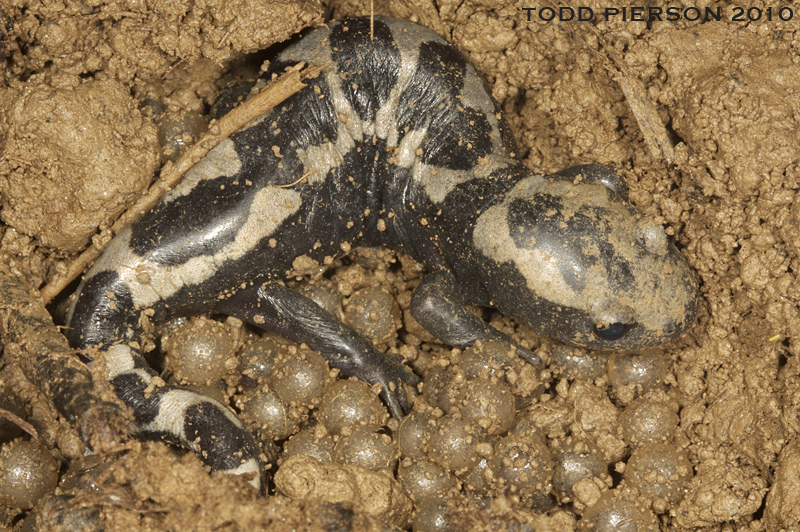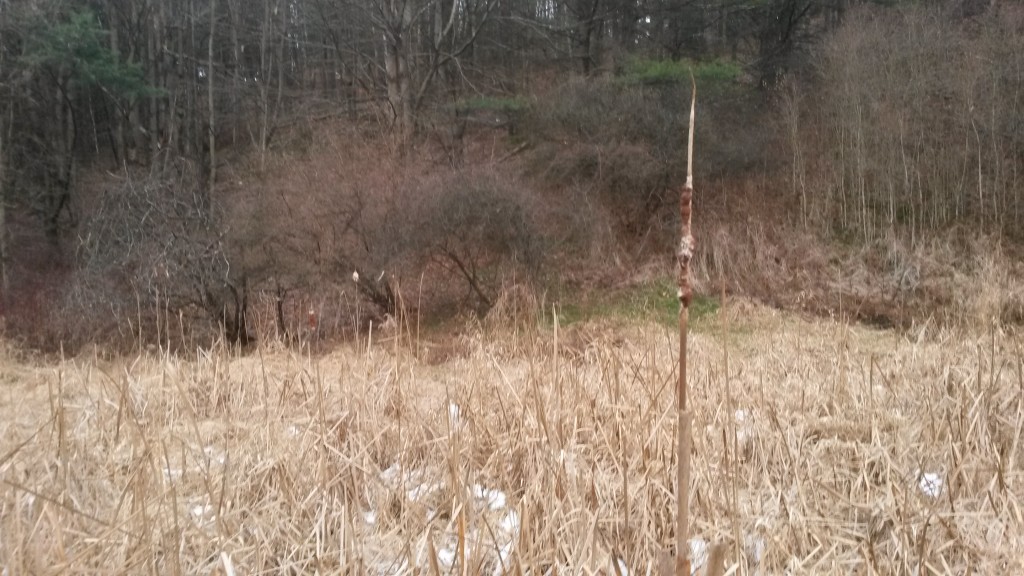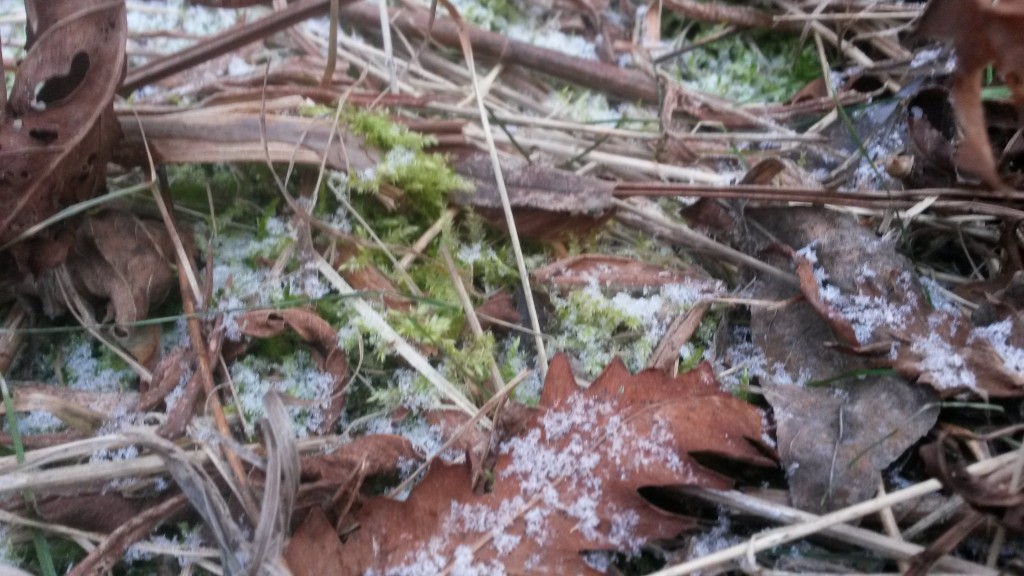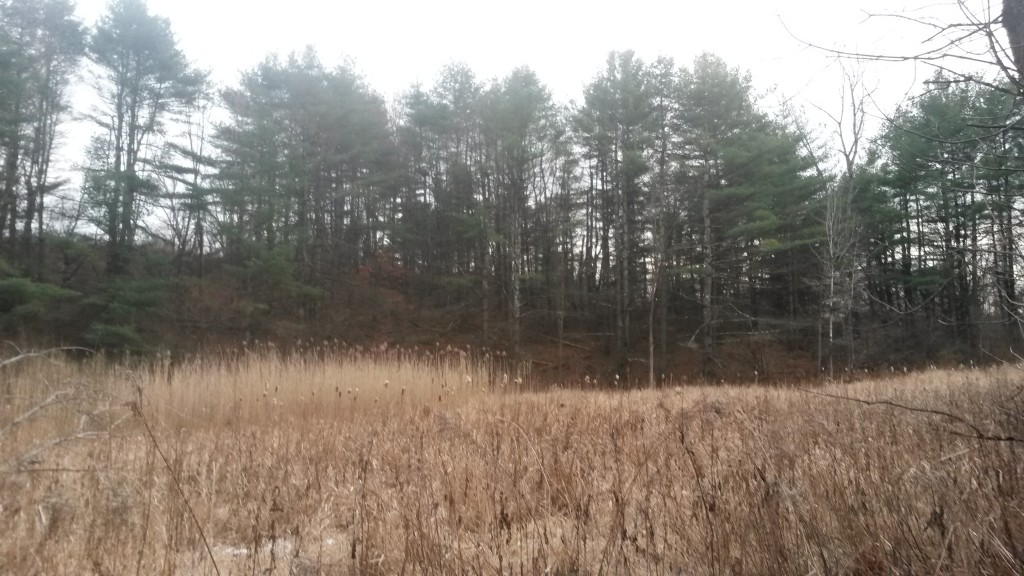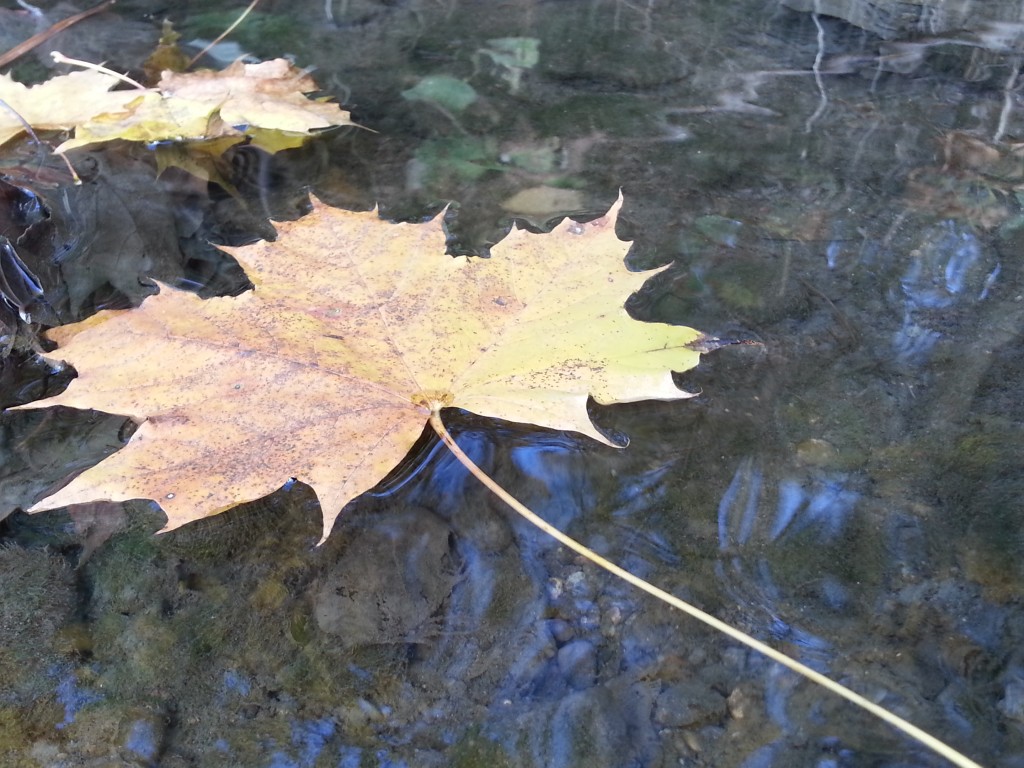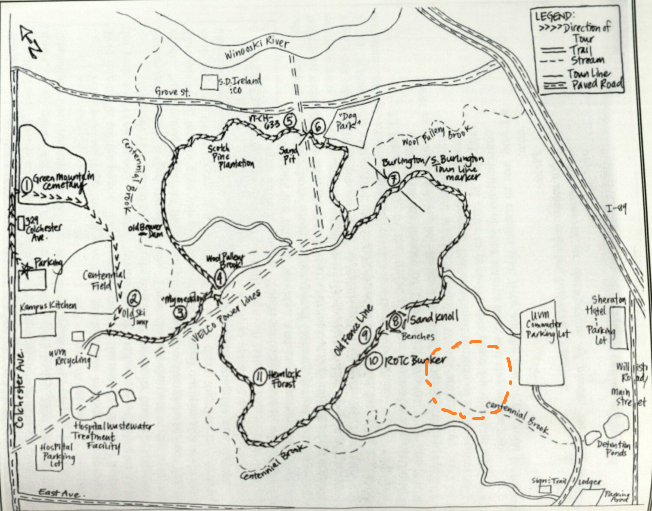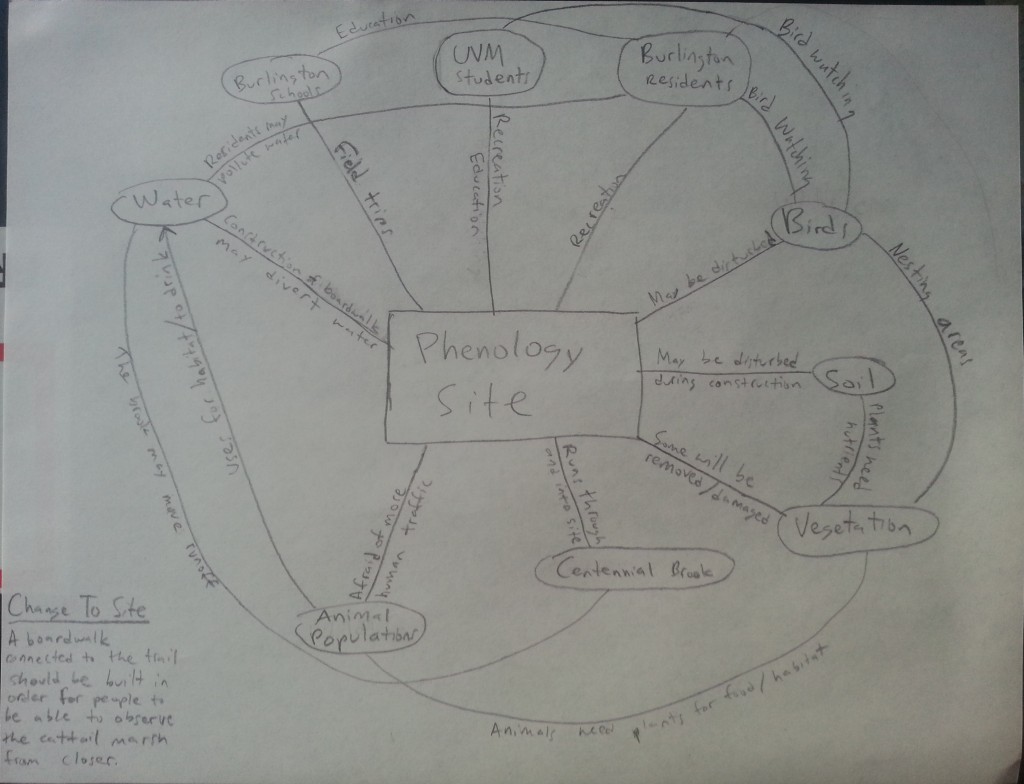This blog is coming to a close, but it shall not disappear. Just as death seems ubiquitous in winter, and growth seeming to be over, this blog may seem like it too is winding away. However, it may not be the case, just like with winter. It may not be totally clear, but life is still quite present in the frigid winter months! It is in the evergreens, the mosses, the birds and squirrels, the beetles and other bugs that hide under rocks and logs. For example, the Marbled Salamander (Ambystoma opacum) has learned a way to take advantage of the winter. Instead of waiting until spring to find a mate, when the currently empty vernal pools begin to fill up, these little mole salamander mothers prefer to breed early and sit with their eggs under a log in a dry vernal pool. This way, the eggs are developed by spring, and as soon as rain hits them, they hatch and are already at an advantage over the other salamander species.
Ambystoma opacum: Marbled Salamander
(Pierson, T. 2010). Used under Creative Commons license.
Specifically at my phenology spot, I saw that there was still some snow dusting the land. The marsh has faded away quite a bit from its autumnal state: most of the grasses are flattened and dry, the saturated mud is frozen at the surface, and most plants have finished their reproductive cycle. In the photo below, one can see a single cattail standing in the foreground that has lost the mass of its seeds, just like most of the cattails in the background have.
It appears that the sphagnum mosses are still alive, even with some remaining snow from the last time the ground was covered.
All that is left are the browns, tans, and dark greens. Relatively, it is a quiet season. Winter does quite well at driving away those who dislike the cold. But for those who stay, we are left with this special beauty — the beauty of solace in this land.
All photos are by the author (Kevin Melman) unless specified otherwise
